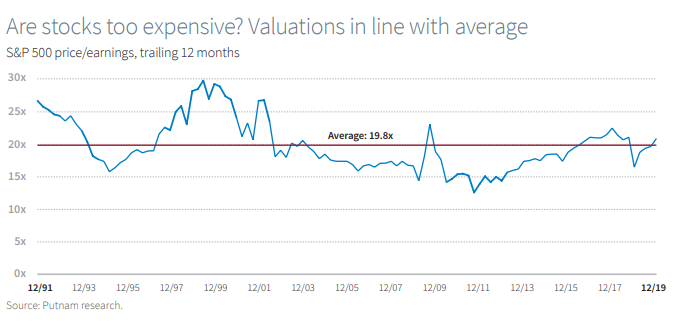A few weeks ago, I wrote a post how a new mega trend had emerged for sustainable investing. What I should have done immediately after I wrote that post, was go out and buy Tesla stock. In full disclosure, I had owned it for my more aggressive clients. I sold it when the value for the business began to make no sense. I gave a very generous assumption that Tesla could generate $3B in free-cash flow by 2023-2024 and this put the enterprise valuation around $100B. I exited around this level. Tesla stock continued to go all the way up to a $150B value. I failed to recognize that investors of Tesla were not valuing the business the same way I was. They were riding the momentum like Bitcoin or their favorite crypto-currency. Tesla became bitcoin on wheels.
This gave me a flashback to the pot stock Tilray that was bid up to an unbelievable $30 billion valuation. The company only had a few million in sales. I wrote a post a few years ago on how insane the rally was in pot stocks. Since that time most of these pot stocks are all down -80%. I’m not predicting that Tesla will drop -80%, but it’s not worth $150B. The size of the company at one point last week was almost as large as Toyota in market capitalization! Toyota sells around 10 million cars a year and Tesla sells 500k a year. Volkswagen Group owns Audi, Bentley, Bugatti, Lamborghini, and Porsche and their market cap is $100B. Tesla at $150B is a tough comparison.
A Tesla bull would make their case by quoting Wayne Gretzky, “Skate to where the puck is going, not where it has been.” Tesla is leading the way in electric vehicles and they are changing the automotive landscape. Even though Tesla became overvalued and highly speculative, I believe it is capitalism working at its best. Capital should be given to the company that is skating to where the puck is going and taken away from where the puck has been. Case in point is Ford stock that dropped -10% when they reported earnings this week. The market cap of Ford is now $33 billion compared to $150 billion for Tesla. After Tesla made a historic move to $960, it fell $100 in the final hour of trading, and then dropped another $150 the next day. From the high price of the stock, the total loss was -30% in only a few hours of trading. But this won’t stop this crowd. If they can lose 90% in marijuana stocks with no earnings and buy worthless cryptocurrencies, it will take much more to shake them out of a growing company like Tesla. Tesla is the future of electric vehicles. But I’d warn this crowd that the beauty of capitalism is that it is self-destructive. Toyota, Ford, GM, Volkswagon, and all the new competitors will allocate more capital into electric vehicles. There will be so much money allocated that combustion engines will be the losers. The prices for all these electric vehicles will fall fast as new efficiencies are realized. Tesla has the first-mover advantage and they build the most desirable electric vehicle with the best technology. These investors can value Tesla in a wide range between $75B-$175B because it’s possible that Tesla is the big winner and will sell millions of electric vehicles in the next few years. After this period, Tesla will need to stay a few steps ahead of the competition. However, all of the CEO’s of the major automotive’s are going all-in on electric vehicles now that that they realize that they are getting disrupted by Tesla.
I would like to retract what I wrote a few weeks ago that a new mega trend had emerged in sustainable investing. The mega trend is not sustainable investing. The mega trend is that there is now a legion of investors buying technology stocks and they do not value companies. This is the same crowd that traded cryptocurrencies and got wiped out. They picked up the pieces and bought marijuana stocks thereafter because they were all going to go up 100%+. They believed everyone was suddenly going to start smoking pot. As soon as the same crowd blew themselves up, they have moved onto U.S. technology stocks. They believe everyone will go out and buy more Tesla’s than Toyota’s in the next 5 years. The thinking now goes that all the major technology companies deserve valuations over $1 trillion. If they are worth $1 trillion, why shouldn’t a few of them be worth $2 trillion? It’s safe to say that investors buying these technology stocks don’t spend much time valuing the business. They look for a stock that has positive catalysts, strong momentum, and then they load up if the algorithms/computers start buying. The story over the last year has been technology stocks and sustainable investing. You have the choice to either dance while the music is playing or sit it out. It has become the worst market environment for value investors.
The chart below supports just how narrow the stock market has become over the last 12 months. You have one set of investors that has went conservative buying low risk investments that pay high dividends such as Communications, REITs and Utilities and the other set of investors piling into technology stocks. We are now entering bubble territory for technology stocks and it’s impossible to predict when it will end.

This is the third time in the last three years where the famous quote applies from Charles Mackay, Extraordinary Popular Delusions and the Madness of Crowds, where he said, “Men, it has been well said, think in herds; it will be seen that they go mad in herds, while they only recover their senses slowly, one by one.”
This herd of investors are delusional and mad and they do realize it. They have all the best trading tools at their disposal – cutting-edge software, advanced program trading, and no friction costs because trades are now free. It’s like a flash mob when they all pile into the same stock and drive it up and then it will eventually come crashing down. Wall Street is happy to play along and upgrade the companies and raise price targets to justify the valuations. The higher these stocks go the more money they will make. This is the mega trend! Some would call it a stock market bubble, but the entire stock market is not in a bubble. I believe it’s only the stocks that these crazed investors are buying. It has reached a point that it is now expected that all of the major technology stock prices will move between 5%-20% after every quarterly earnings release. Even the mega-cap tech stocks are trading up or down 10% after reporting earnings. Any of these CEO’s of these companies would be quick to point out that their business do not change all that much in three months. The volatility couldn’t be any higher for technology stocks. I’m no longer surprised if they go up or down 5% in any given week. It’s almost expected. A seasoned value investor would be quick to point out that volatility is always the highest at the very top of the market or at the bottom.
I’m confident that this crowd of investors will continue to speculate in technology companies, but at some point, the gains will slow or the losses will increase, which will cause this herd to move on to another area to make even faster money. It is still early because there has been no losses yet. Bubbles only deflate after investors lose money and this one is showing no signs of slowing. I expect the losses will be quick when the time comes because this herd with all the best trading tools will see it coming and they could all head for the exits at the same time. This is the reason why you have noticed a pickup in my trading activity. I’m not speculating in high priced technology companies and I’ve begun to step out of the way of these crypto-technology stocks. I know I’m early starting to sit out while the music is playing, but I’m maintaining some exposure for now. For my retired clients with lower risk tolerances, I have increased fixed income allocations. I’m about 90% complete with my reallocation and I’m much more comfortable with your investments at this phase of the bull market. Going forward, you should expect much less trading activity from me compared to recent weeks.
Please read our disclosure statement regarding the contents of this post and our website as a whole.



